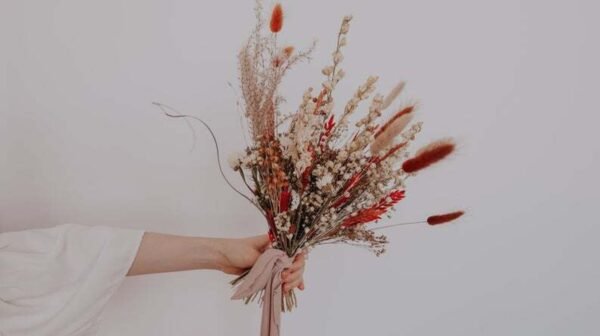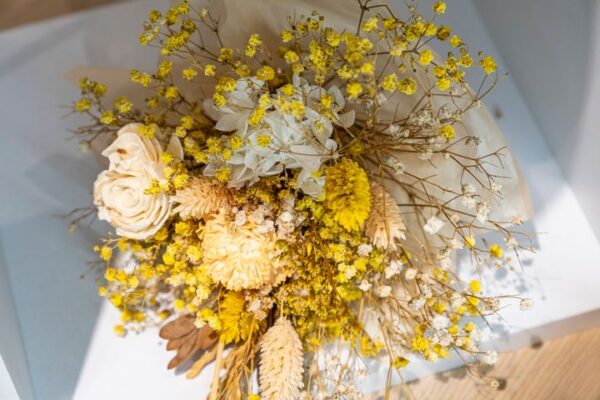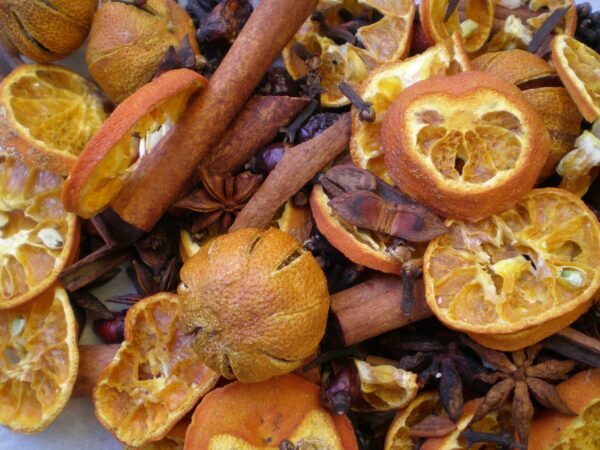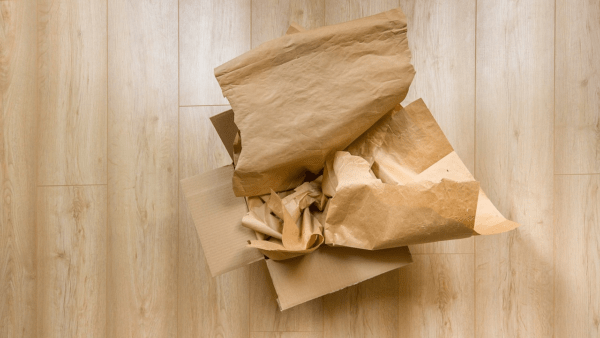
Don’t let your beloved bouquet wither away in vain. With a little bit of creativity, those dead flowers can be repurposed into something beautiful and unique. It’s a way to extend their lives and yours by reconnecting with nature and your inner artist.

From roses that symbolize love to daisies that represent innocence, every flower has a story to tell, even when they’re past their prime. This article will show you eight ingenious ways to breathe new life into your wilted bouquet. Whether you’re crafting homemade potpourri, pressing flowers into art, concocting petal perfume, producing eco-friendly paper, or designing floral candles, you’ll discover that the end of a flower’s life doesn’t mean the end of its usefulness.
Let’s explore how you can transform those wilted petals into something that keeps the essence of their beauty alive.
Creating Homemade Potpourri

You don’t have to toss out those wilted blooms; instead, let’s explore what to do with dead flowers and turn them into a delightful homemade potpourri that’ll freshen up your home. Transforming your bouquet into potpourri is a simple process that not only saves your flowers from the trash but also gives them a new purpose.
First, separate the flowers from their stems. Roses, known for their romantic symbolism, are ideal for potpourri due to their strong scent and vibrant colors. For a touch of cheerfulness, include daisies, a symbol of innocence and purity. Don’t forget to add lavender for its soothing aroma.
Next, dry your flowers. This can be done by hanging them upside down in a warm, dark location. This process preserves the flower’s color and scent. Once completely dry, mix your flowers with essential oils. The oil’s fragrance will enhance the natural scent of your flowers, creating a potpourri with a customized aroma. Add extra elements like dried citrus slices or cinnamon sticks for an added touch of freshness and spice.
Now, isn’t that a breath of fresh air? But don’t stop here. Your repurposed bouquet has more to offer. Next, let’s explore how these dried flowers can be transformed into beautiful pieces of pressed flower art.
Crafting Pressed Flower Art
Transforming those wilted petals into pressed flower art not only breathes new life into something seemingly past its prime but also allows the beauty of nature to be cherished forever. This ingenious method of repurposing your bouquet taps into your creativity and immerses you in a charming activity that’s both relaxing and rewarding.
Start by selecting flowers from your bouquet with vibrant and distinct colors. Roses, with their universal symbol of love and beauty, are a popular choice. Pansies, known for their delicate and intricate patterns, can also add a unique touch to your art. Press your chosen blossoms carefully between the pages of an old book, ensuring you place them away from the book spine for optimal pressing.
After about two weeks, you’ll find your flowers have dried and been pressed flat, preserving their beauty in a new form. Now, it’s time to get creative! Arrange your pressed flowers on a canvas or cardstock to create a beautiful collage, or incorporate them into a scrapbook or journal for a more personal touch.
As you admire your new pressed flower artwork, you may find yourself enchanted by the lingering scent of your old bouquet. This aromatic memory might just inspire you to explore another creative avenue: making flower petal perfume.
Making Flower Petal Perfume
Capturing the essence of a cherished bouquet isn’t limited to pressed flower art; it’s also possible to distill its beauty into an unforgettable fragrance: flower petal perfume. Imagine breathing in the scent of your favorite flower, preserved in a bottle long after its petals have fallen. This is more than just a perfume; it’s a sensory snapshot of a cherished moment, an aromatic keepsake that can whisk you back in time with just a single whiff.
- Collect: You’ll need to start by collecting the petals from your bouquet. Roses are a classic choice; their scent is a timeless symbol of love and passion. Lilies, on the other hand, suggest majesty and purity. Each flower has its own unique aroma and symbolic resonance, allowing you to craft a perfume that’s truly personal.
- Extract: Once you have your petals, it’s time to extract their essence. This involves soaking them in jojoba oil or another carrier oil for a few weeks, infusing the oil with their delicate scent.
- Blend: After the extraction, blend the infused oil with alcohol to create your perfume. This process may take some experimentation to get the balance just right, but the end result will be worth it.
As you breathe in the scent of your homemade flower petal perfume, you’ll find it’s not just about preserving the life of a bouquet. It’s about capturing a moment, a memory, or a feeling. And while it’s a fantastic way to repurpose dead flowers, it’s not the only one. Next, we’re going to explore how you can transform them into something equally beautiful and sustainable: eco-friendly paper.
Producing Eco-Friendly Paper

With a little effort and patience, it’s possible to turn those wilted petals into vibrant, eco-friendly paper. This ingenious idea not only allows you to repurpose your dead bouquet but also contributes to the environment in a creative way.
You’ll need to gather your flowers, some old paper or cardboard, and a blender.
Start by carefully removing the petals from your flowers. If you have roses, their sturdy petals work exceptionally well for this process. Chrysanthemums, with their multitude of small, delicate petals, offer a diverse color palette. Even lilies, with their large, fragrant petals, can add a unique touch to your paper.
Once you’ve collected all your petals, tear your old paper or cardboard into small pieces and blend them with the petals and some water. The resulting pulp should be spread thinly on a flat surface and left to dry.
This process is not just about creating paper. It’s about taking something seemingly lifeless and giving it a new purpose. It’s about embracing the beauty of nature, even in its decay.
As you light up your home with the warm glow of your newly crafted floral paper, consider how you could incorporate these beautiful hues into your next project, perhaps a floral candle.
Designing Floral Candles
There’s no better way to showcase the stunning hues of your homemade floral paper than by incorporating it into an exquisite, handmade candle. This creative endeavor not only breathes life into your wilted bouquet but also infuses your space with a soft, floral ambiance.
Here’s a simple guide on how you can do it:
- Prepare Your Materials: Gather your homemade floral paper, a plain pillar candle, a heat gun, and a pair of tweezers.
- Cut and Arrange: Cut the floral paper into small pieces or intricate designs. Arrange them artistically on the candle. Remember, roses symbolize love, while daisies represent innocence. Unleash your creativity!
- Heat It Up: Carefully use the heat gun to melt the surface of the candle just enough to allow the paper to stick. Using tweezers, press the paper onto the candle.
- Seal the Deal: Apply another layer of heat until the paper is completely adhered to the candle. Allow it to cool and harden.
This delightful craft transforms your wilted flowers into a piece of art that lights up your room and your spirit. It’s a testament to the beauty of repurposing and the enduring charm of flowers, dead or alive.
Conclusion
Don’t toss those wilted blooms! You’ve discovered eight creative ways to give a second life to your dead flowers.
From crafting homemade potpourri to designing floral candles, each method allows you to cherish their beauty a bit longer.
Whether it’s a crimson rose or a delicate daisy, every flower has a story to tell.
So get creative, breathe new life into your faded bouquets, and let your innate creativity blossom like never before.
